TweakTown’s Rating: 95{2c093b5d81185d1561e39fad83afc6c9d2e12fb4cca7fd1d7fb448d4d1554397}

The Bottom Line
Lenovo dials in its Legion 7i prebuilt gaming PC with very solid hardware and even better pricing!
Pros
- + Water-cooled CPU that handles cooling well
- + Upgradable components and standard form factor
- + Gaming performance
- + Vertical GPU mount
- + Price
Cons
- – PCIe power uses an adapter for the GPU
- – Subpar NVMe SSD performance
Should you buy it?
AvoidConsiderShortlistBuy
Introduction and Pricing
Prebuilt gaming machines are a near turnkey option for consumers wanting to make the move from consoles or get into gaming for the first time. There are endless vendors offering prebuilt options, most offering multiple SKUs for each generation. Today’s system comes from Lenovo’s Legion portfolio, and it is safe to say one of the more popular options when it comes to prebuilt gaming PCs.
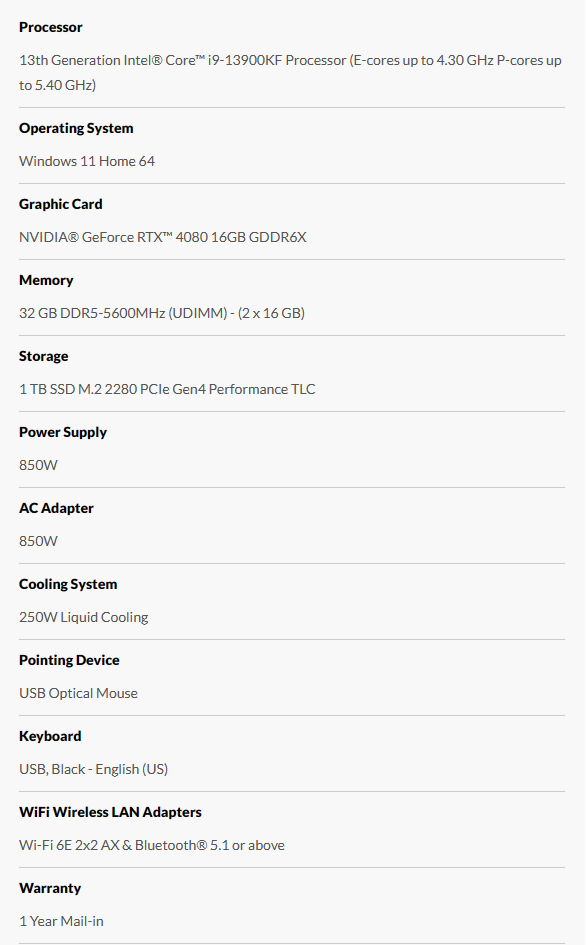
VIEW GALLERY – 40 IMAGES
The build for this machine is a retail offering with the SKU being “90V60000US”. This machine is based on the Intel Z790 chipset and is equipped with the Core i9-13900KF; the KF is a 24-core/32-thread CPU and the top offering within Intel’s desktop CPU offerings outside of the KS.
Memory for this machine is two sticks of DDR5, 5600MHz, with room to upgrade. Storage is a single drive, 1TB NVMe, with a Samsung drive included. Further down the specifications, this SKU of the Legion 7i is set up with the GeForce RTX 4080 from NVIDIA and offers 16GB of dedicated GDDR6X. To power this system, Lenovo has installed an 850W PSU.
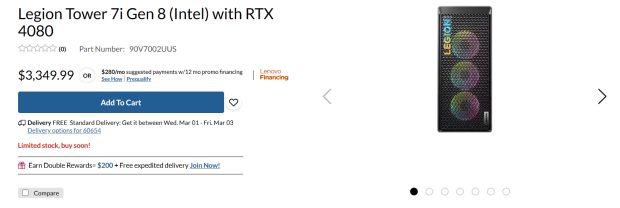
At the time of writing, Lenovo has the Legion 7i, as detailed above, listed at $3349.99, including a one-year warranty.

The Legion 7i, BIOS and Software
Packaging and BIOS
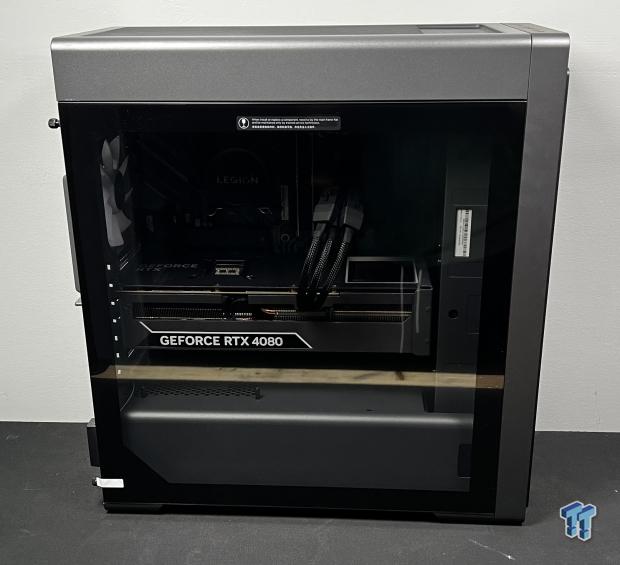
The Legion 7i uses a simple design with all standardized parts. This includes the chassis, a standard windowed mid-tower with a similar design to the Corsair 4000D.
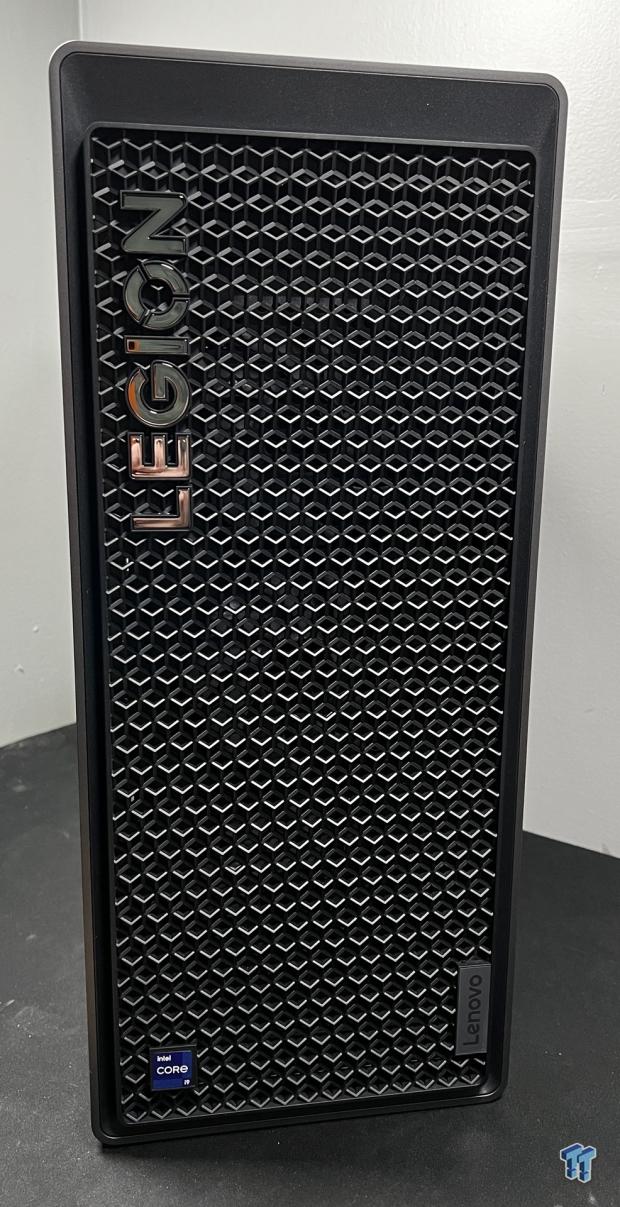
The front of the chassis includes Legion branding and an overall mesh design to allow cool air into the chassis.
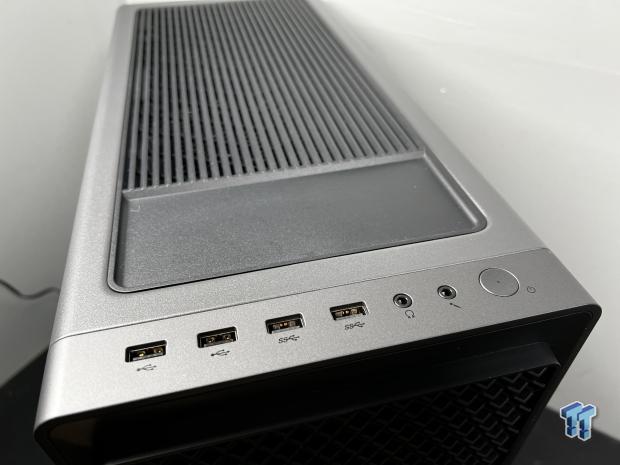
The chassis I/O connections can be found on top; these include two USB 2.0 and two USB 3.2.
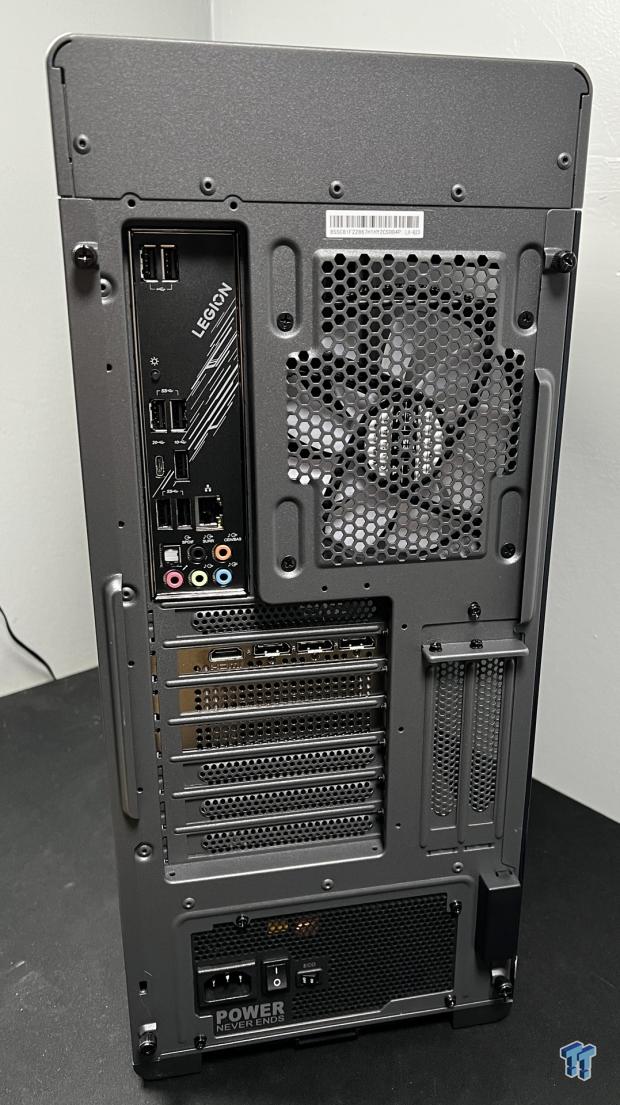
The rear I/O includes two USB 2.0 at the top followed by four 10Gb/s USB 3.2 and one 20GBps port using Type-C. The LAN port sits next to the bottom two USBs, and the system rounds out with seven-channel audio.
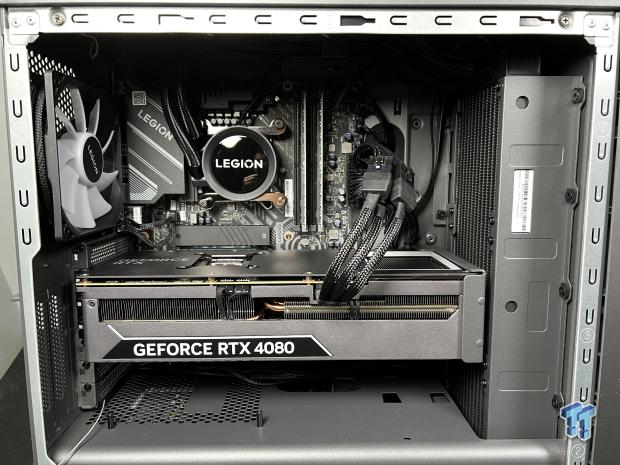
By removing the side panel, we can get to the hardware. I first noted the motherboard as a standard ATX solution. If I were to guess, I would say made by ASRock. It offers four memory slots and three M.2 alongside the LGA1700 socket for the CPU.
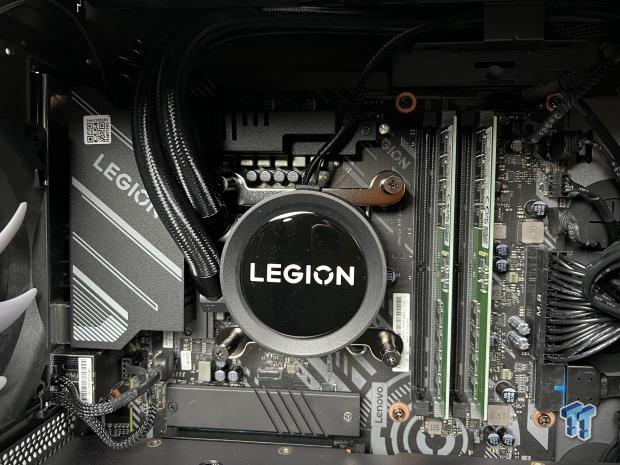
Cooling is provided by a 250w AIO solution branded Legion.
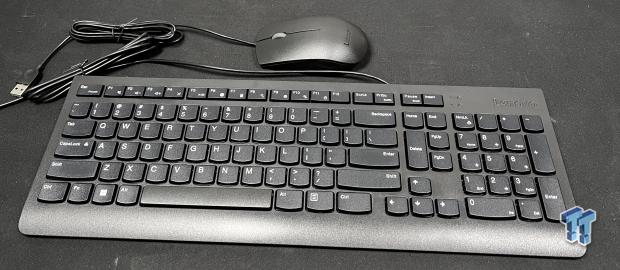
Our sample did have an included keyboard and mouse. Not ideal for gaming, but a decent starter setup.
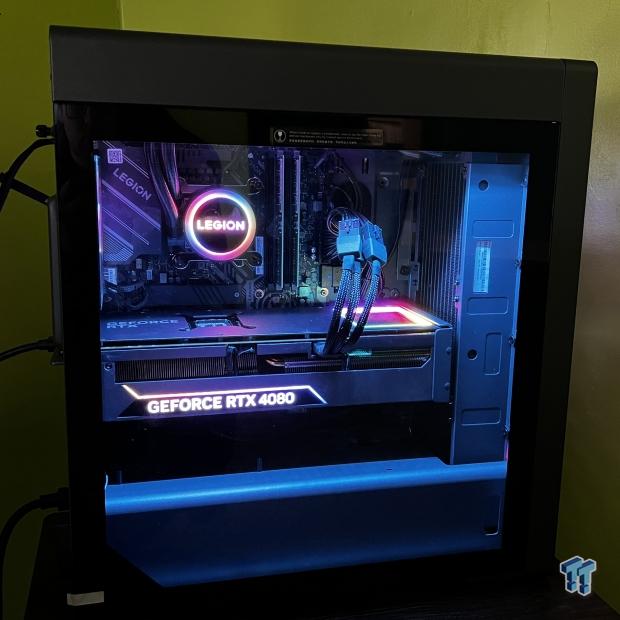
The Legion 7i offers a good amount of RGB, which can be controlled via software.
BIOS
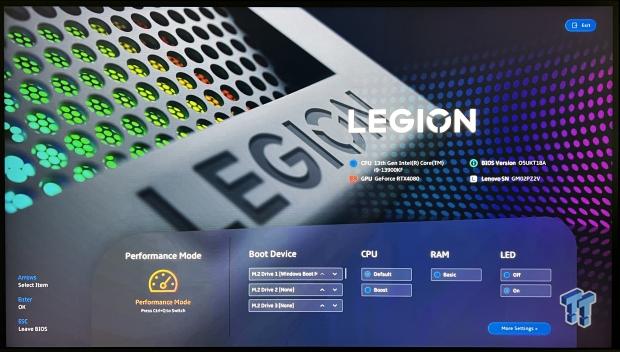
The BIOS includes an EZ Mode with options for performance presets, boot devices, and others. You can go more advanced in the bottom right.
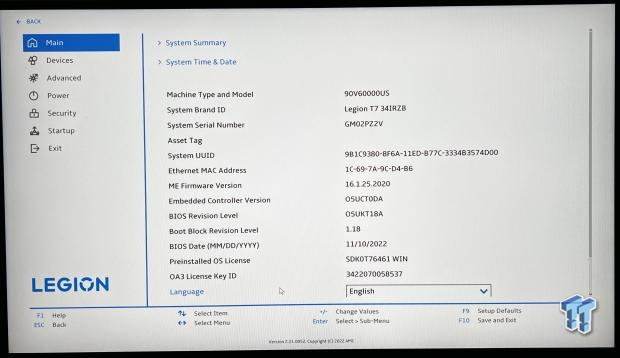
In the advanced menus, we first get a look at model identification info.
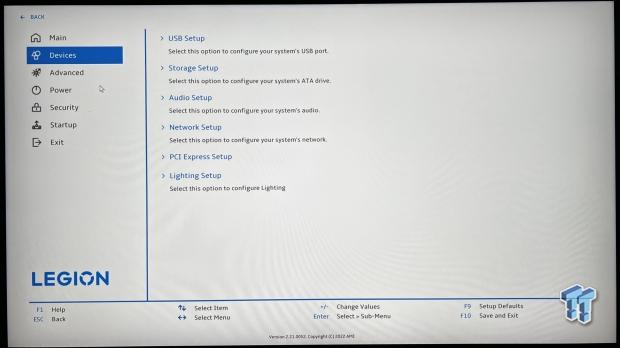
Devices give us access to USB, storage, and audio options. Further down, you can tune the lighting of the system.
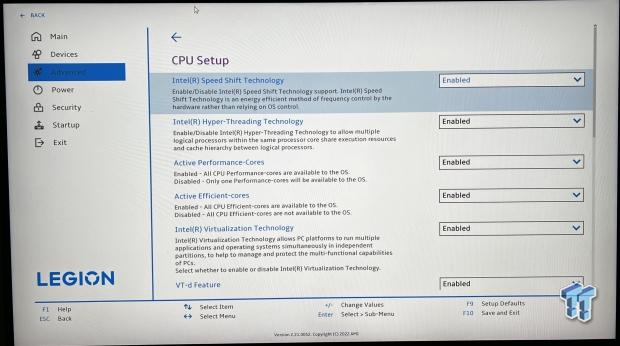
The advanced menu offers options for CPU, including the ability to configure Speed Shift, HT, and active cores.
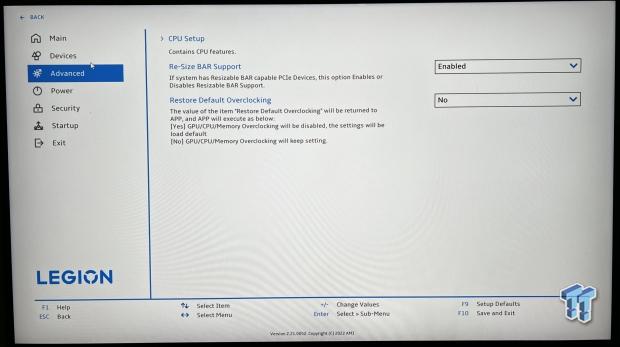
The Advanced menu does give the choice to enable Resize-BAR and enable or disable overclocking.
Software
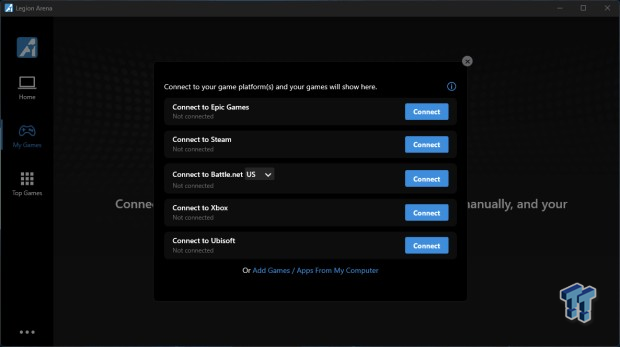
One piece of software included with the Legion is Arena, similar to GeForce Experience, which catalogs your games in one area.
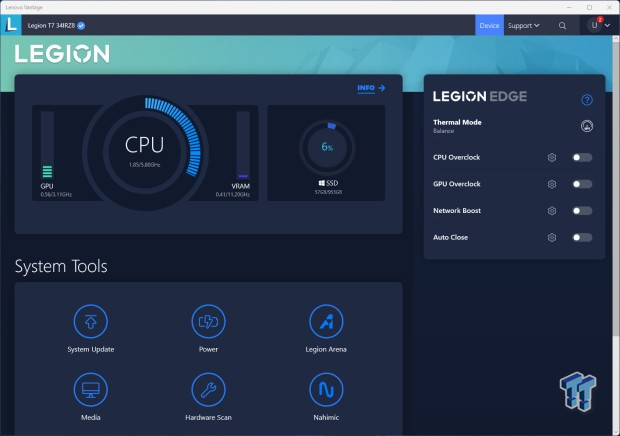
Lenovo Vantage includes a hardware monitor and the ability to configure the machine and update Windows.
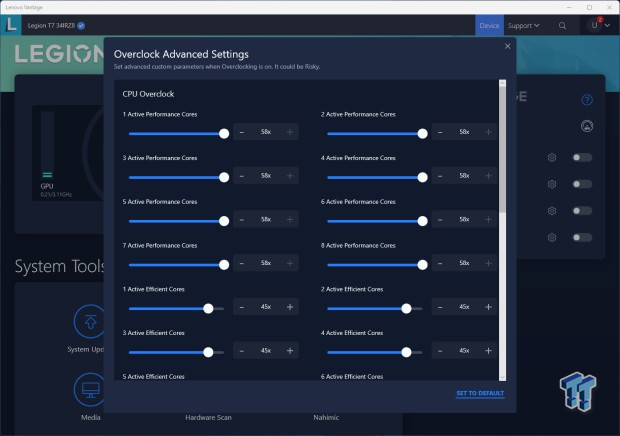
Overclocking is available on Vantage’s right panel, which gives similar tools as Intel XTU.
Cinebench, PCMark and AIDA64
Cinebench R23
Cinebench is a long-standing render benchmark that has been heavily relied upon by both Intel and AMD to highlight their newest platforms during unveils. The benchmark has two tests, a single-core workload that will utilize one thread or 1T. There is also a multi-threaded test that uses all threads or nT of a tested CPU.
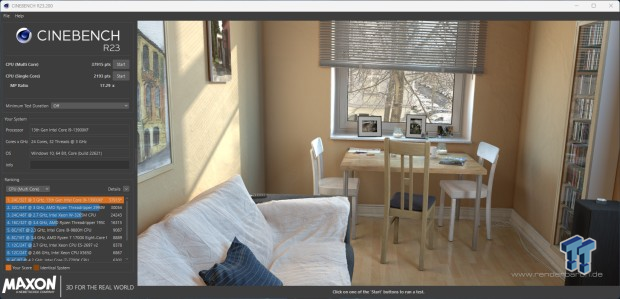
Starting with R23, as we always do, the Legion 7i gave us a single thread of 2193 and nT at 37915.
Crossmark
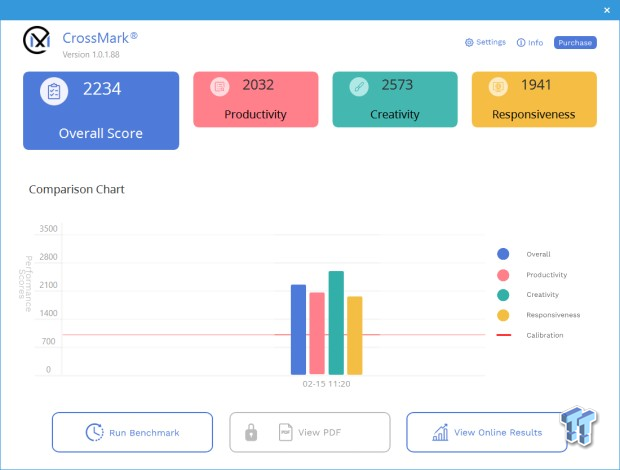
Crossmark showed an overall score of 2234, our best numbers coming in creativity.
AIDA64
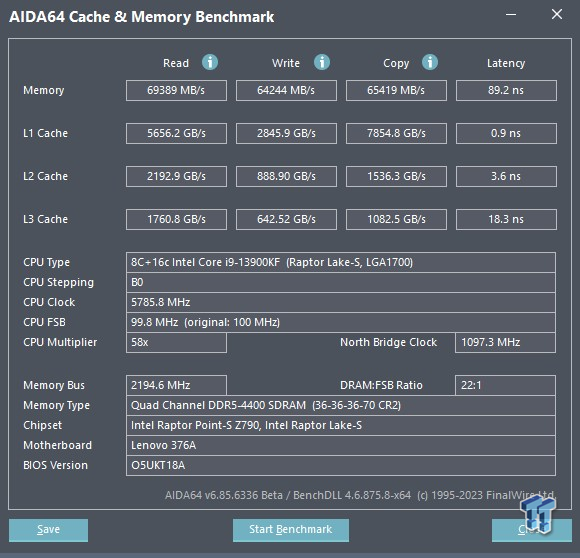
AIDA65 memory gave us throughput at 69K for read, 64K for write, and 65K copy. Latency was a bit high at 89.2ns.
PCMark
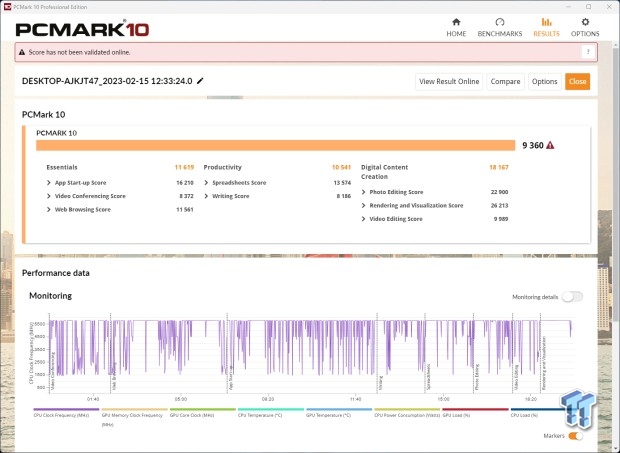
PCMark gave us an overall score of 9360 points.
UL Benchmarks
3DMark
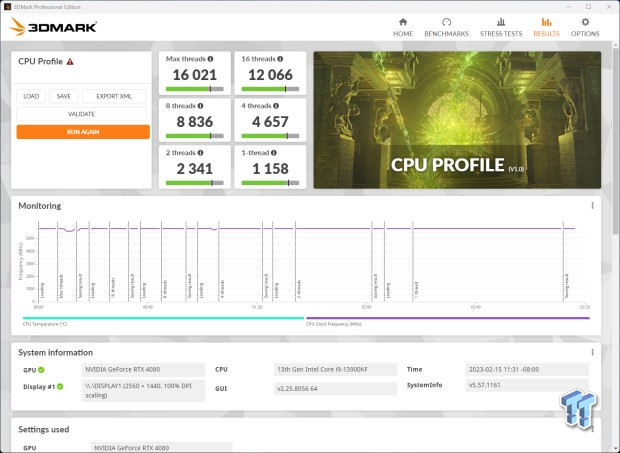
CPU Profile started with 1158 single thread, and at sixteen threads, we see 12066.
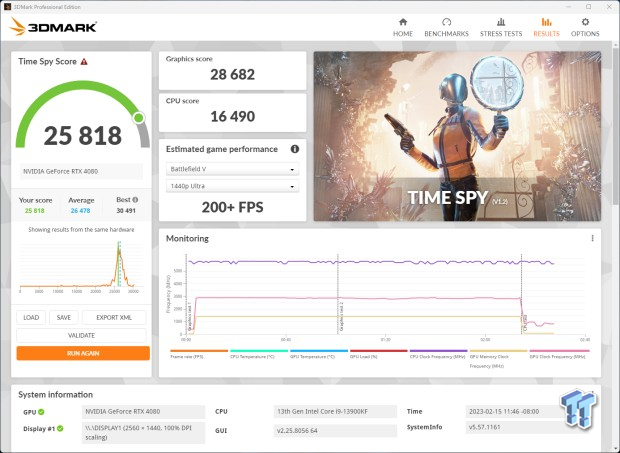
Timespy scored 25818 with the RTX 4080.
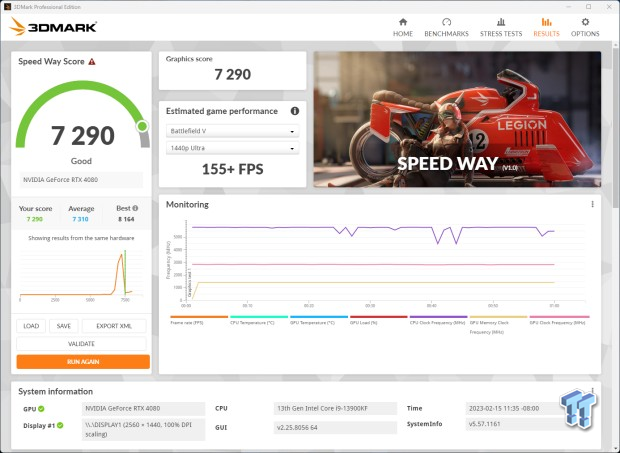
Speed Way scored 7290, average for the GPU.
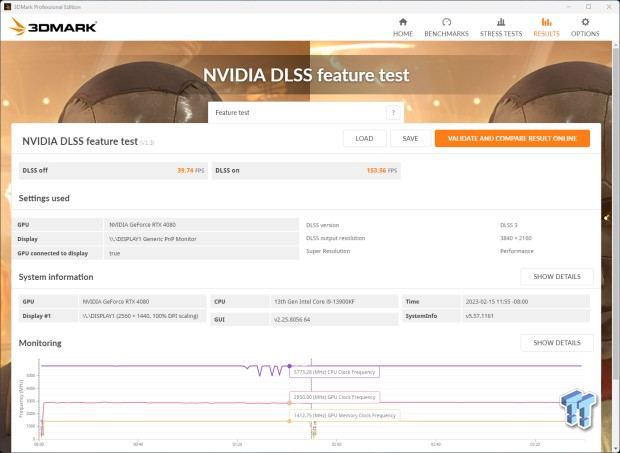
Running through the DLSS feature test, the RTX 4890 scored a base of 39.9 FPS and boosted to 153 FPS with DLSS turned on.
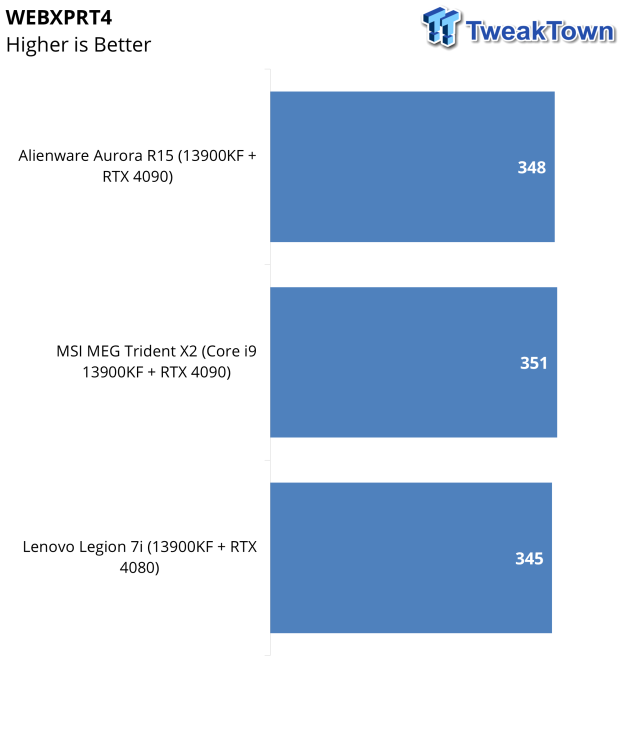
3DMark storage gave us a score of 2551, and bandwidth was 434 MB/s.
Comparisons
Our Charts
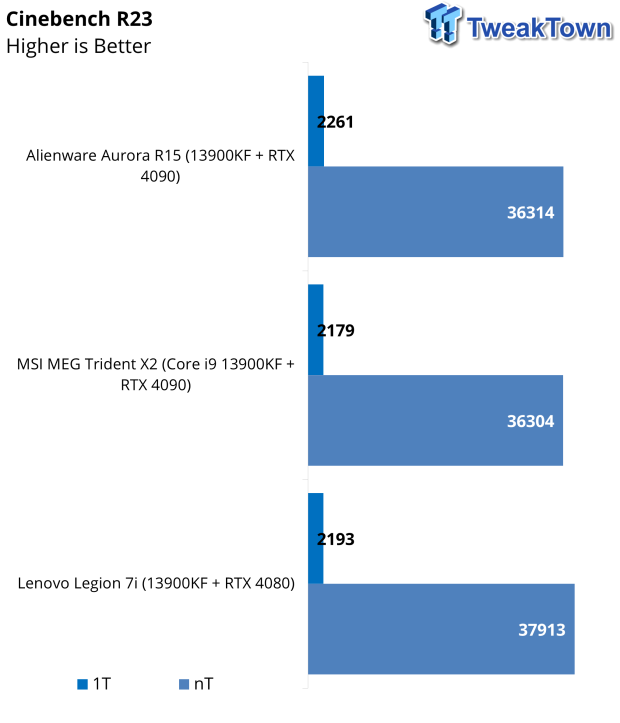
In R23, the Legion 7i did well, grabbing our best nT score at 37913 and single thread at 2193.
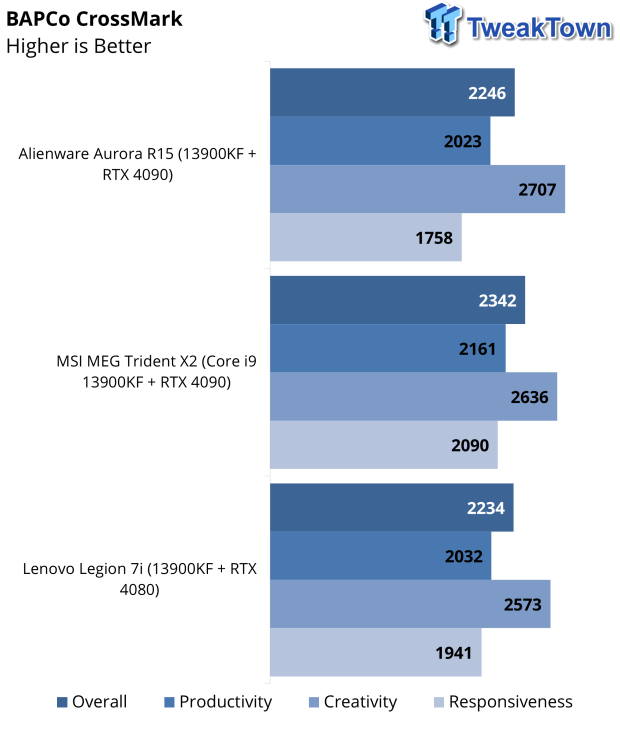
Crossmark showed the Legion 7i about 100 points behind the Trident and right with the Aurora.
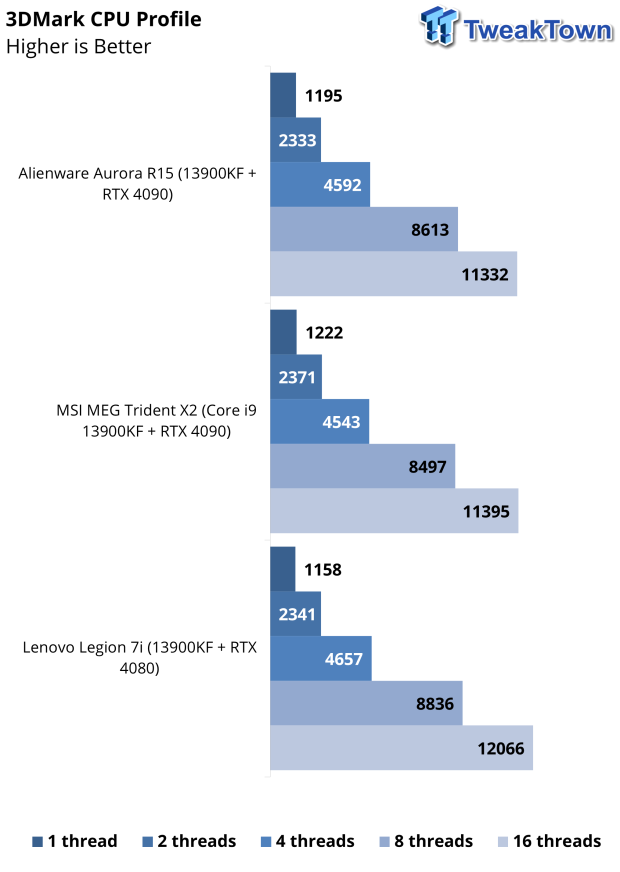
CPU profile had the best sixteen-thread score for the Legion 7i at 12066.
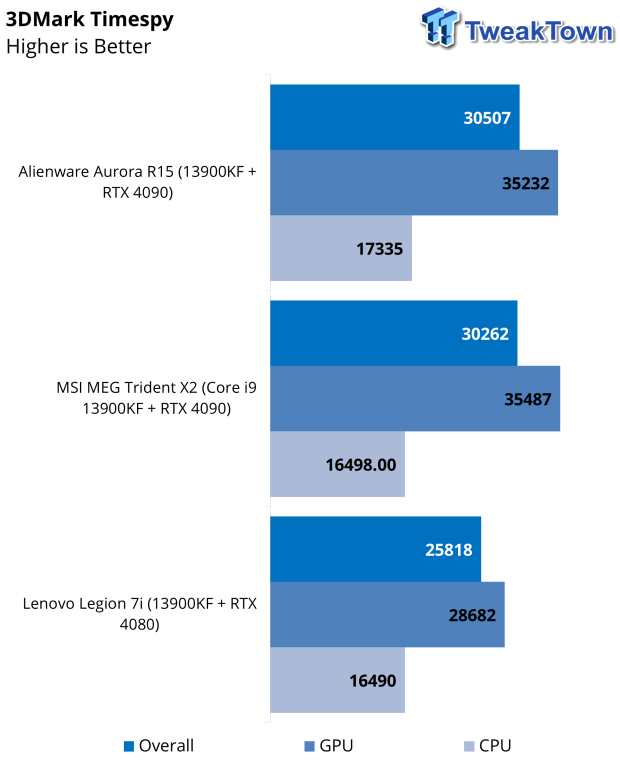
Timespy came in at 25818 for the Legion 7i.
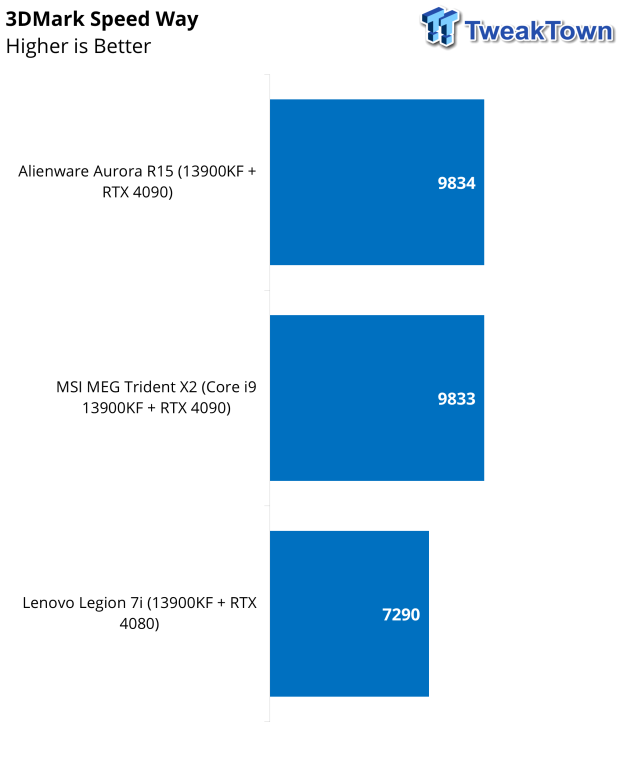
Speed Way was good, with the 4080 scoring 7290.
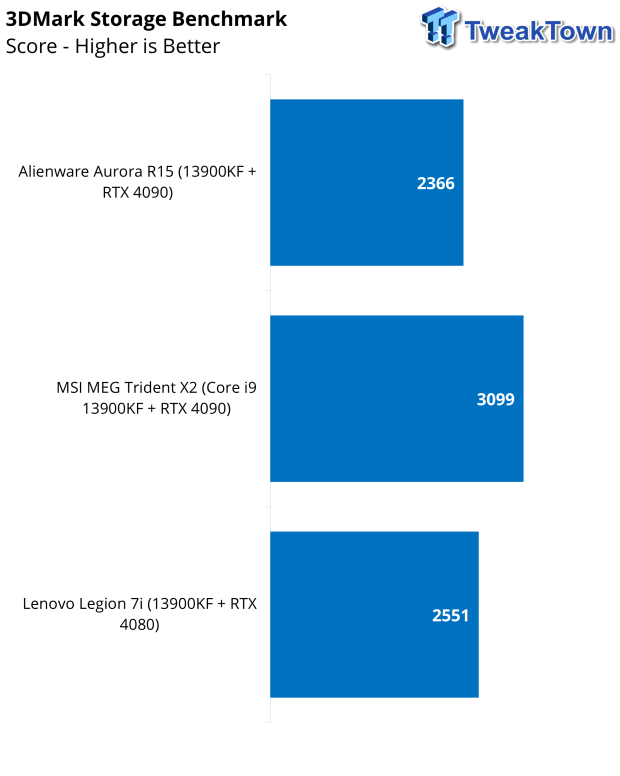
Storage was the second best of the three machines we have seen.
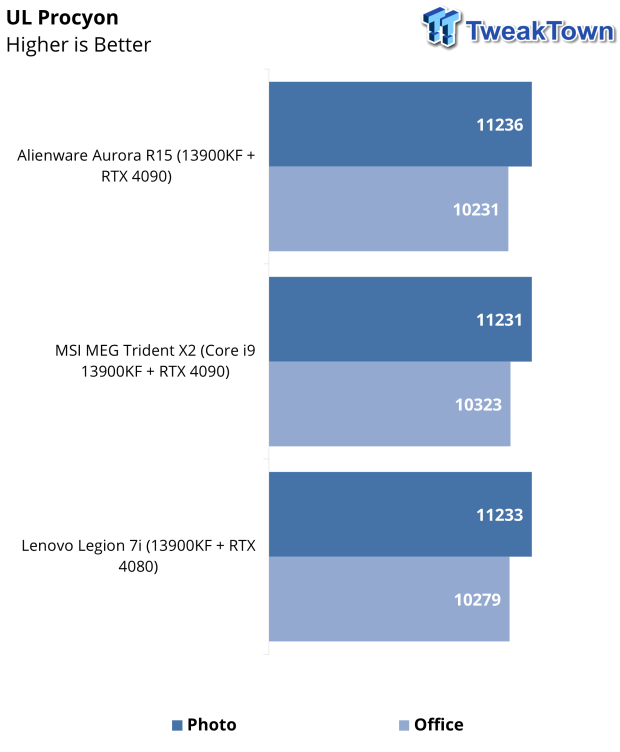
UL Procyon was very close between the machine, with the Legion scoring 11233 in Photo and 10279 for Office.
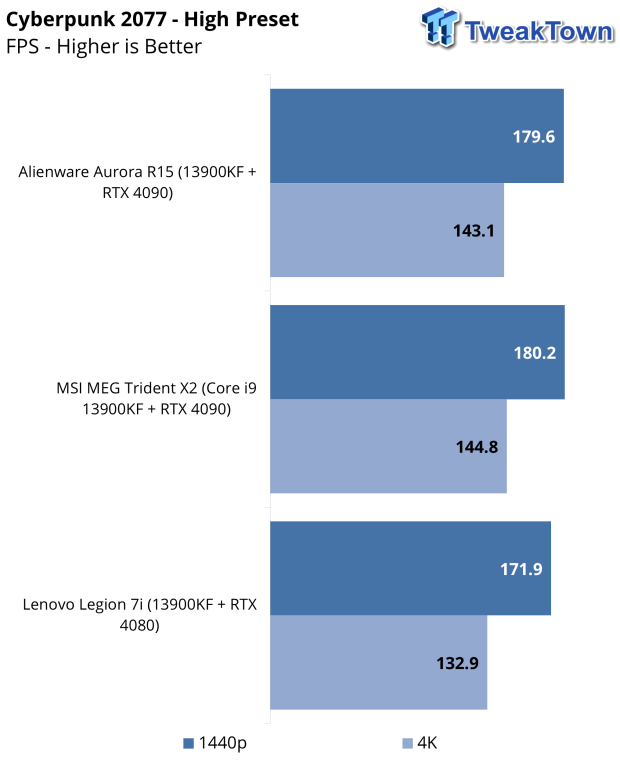
Looking at gaming, we fired up Cyberpunk 2077, which showed the Legion 7i at 171 FPS at 1440p and 132 FPS at 4K.
Value, Clock Variation, and Final Thoughts
Value
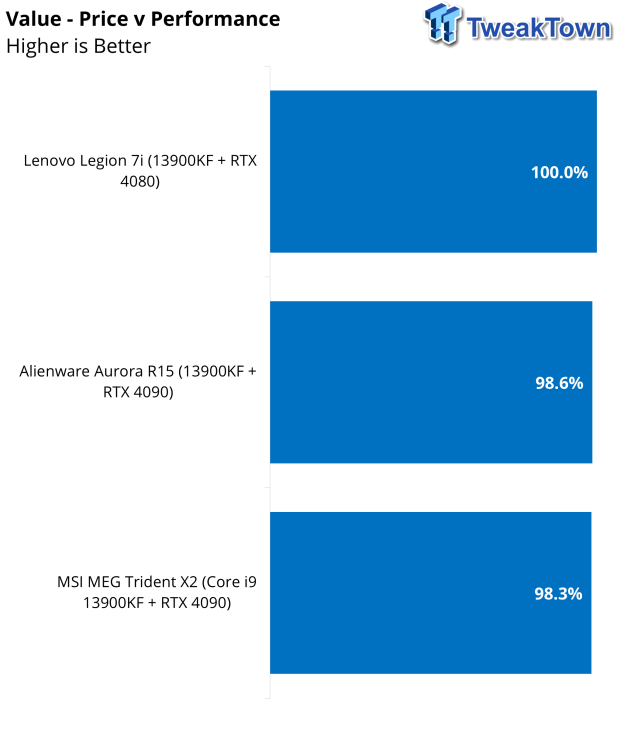
The value between machines gave the top spot to the Lenov 7io, as the price premium to have an RTX 4090 outweighs the performance increase seen.
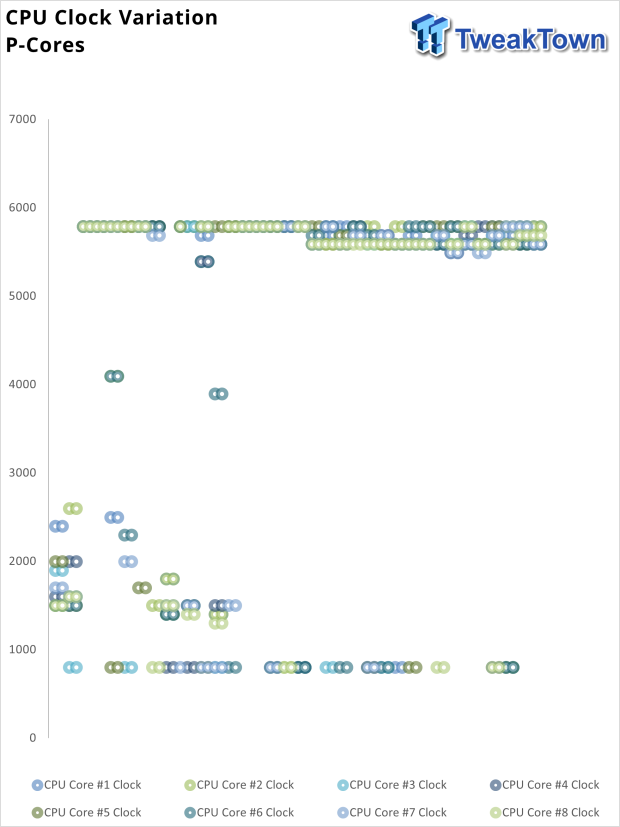
Last, we have Clock Variation, which can sometimes show how good the CPU cooling is. I did note the amount of time this CPU was reaching towards 6GHz, with many of the P-Cores boosting to 5.8GHz during the test.
Final Thoughts
The Legion 7i is one of the best prebuilt gaming PC to come through the lab this year. I enjoyed this system being a standard form factor, including the chassis and motherboard, as it allows the consumer to upgrade as they grow.
The build quality was quite good, the chassis being a steel frame with a tempered glass side panel and a bit of added aesthetic come through on the front panel. The lighting is really well laid out on this machine, giving a soft glow from the chassis. Wire management was also quite good, though I wasn’t a fan of the RTX 4080 using the 12VHPR adapter, as it’s quite ugly to look at through the side panel.
Testing the Legion 7i, the Intel Core i9-13900KF processor is a fantastic choice for overall performance. The 7i had no issues keeping up with our previous two prebuilt systems. It took the top spot in both R23 multi-thread and CPU Profile in 3DMArk; this gives me the idea that this machine’s cooling system is quite capable. The gaming performance was really good with the RTX 4080 – we saw FPS upwards of 170 at 1440p and even grabbed 140 FPS at 4K.
Connectivity is very good for the 7i. Internally we have plenty of expansion with three m.2 slots and several SATA pre-routed to the drive cages. We have both 2.5Gbe LAN and AX211 for Wi-Fi. We would have liked to see an AX411 or AX1690 for wireless VR support. USB is plentiful for most of us. We counted two USB 3.2 on the top panel and five Gen 2 on the rear, the USB-C setup with Gen2x2.
Pricing is quite good at its current MSRP of $3349, and the Legion 7i comes in $1000 cheaper than our two systems that had RTX 4090s with identical hardware for the motherboard, CPU, and RAM. In addition, the performance difference between 4080 and 4090 in real-world gaming was 10 FPS across the board in our Cyberpunk testing. And application performance was, in most cases, better on the Legion – we suspect because it has better overall cooling on the CPU.